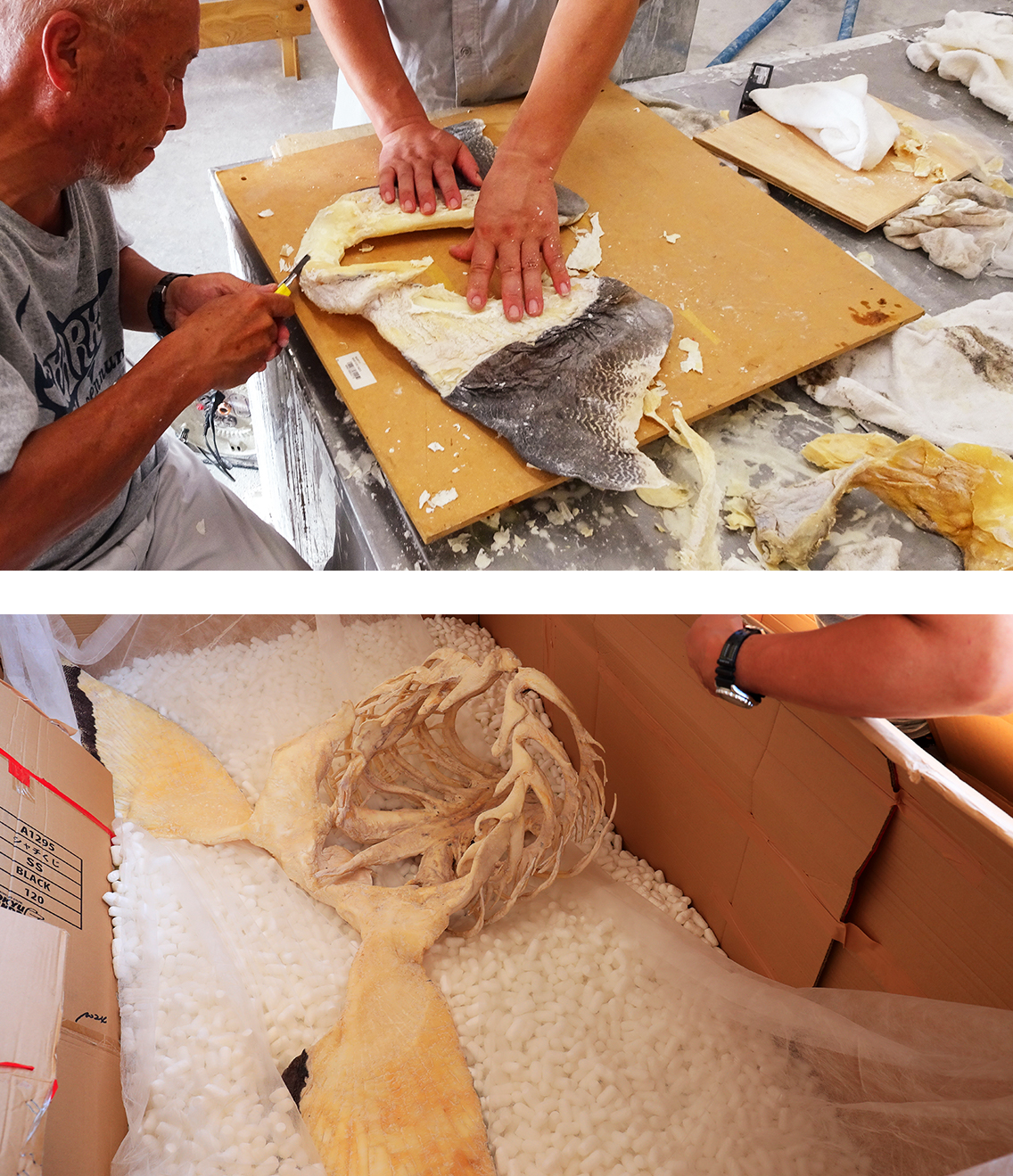
The research process of an unprecedented project
While the megamouth shark was stored in a freezer at -30℃ (-54°F), it was decided to first create a sample of the specimen using the bones of a goblin shark, which are said to have a similar composition as the megamouth shark's bones.
The sample completion brought higher results than expected. Encouraged by this first success, the flesh removal process from the megamouth shark body started in February, the year following the capture. It is said that the whole process took three days, from carefully removing the flesh, to getting to the point where only the bones remained.
"It was impossible to predict what could happen inside the shark's body when removing the flesh. Because the bones were so limp, these could be severely damaged by the teeth of the cutter. It was literally a direct touch exploration," said Mr. Osawa.
In the specific case of megamouth sharks, because of the way they swallow plankton, these animals have complicated gill structures.
It is said that the shark’s body has countless branches of fine cartilage that can stretch like ribs, and these were found one by one with great care when removing the flesh.
And then, March came. All the parts were loaded onto a freezer truck and were sent to a sample-making factory in Shiga prefecture where the bones were soaked in a special liquid. Finally, Dr. Nakaya used his own hands to shape and complete the world's first megamouth shark skeleton specimen.
